First open water test of MUV developed by NSYSU team successfully completed
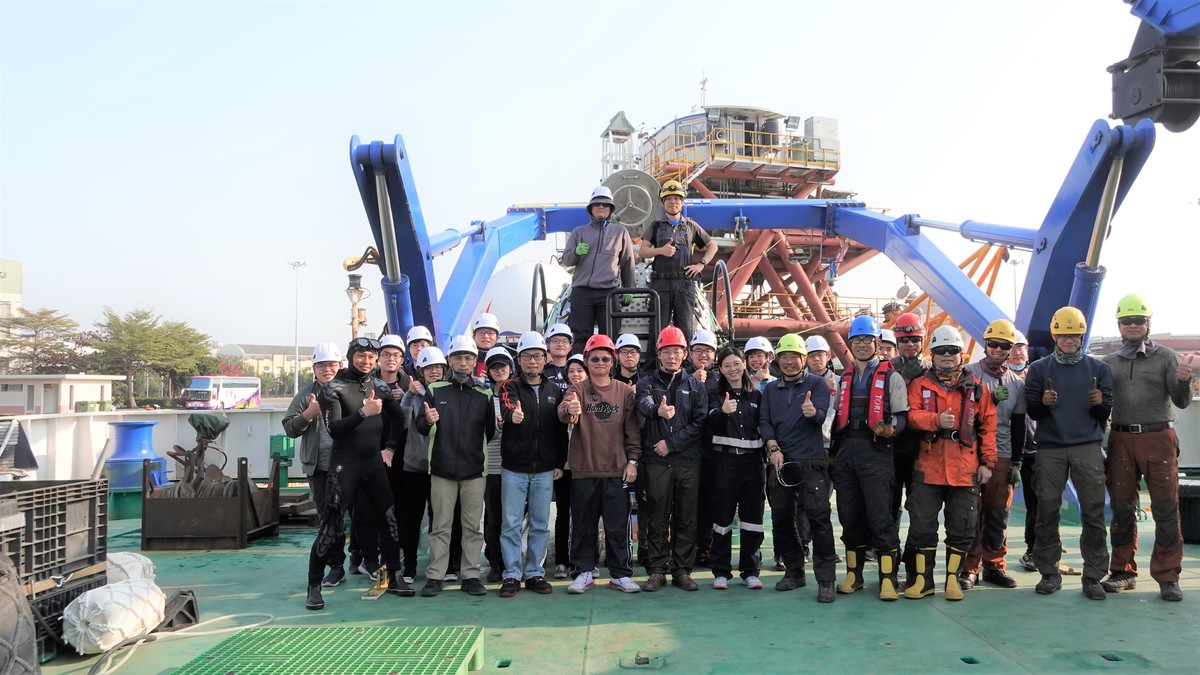
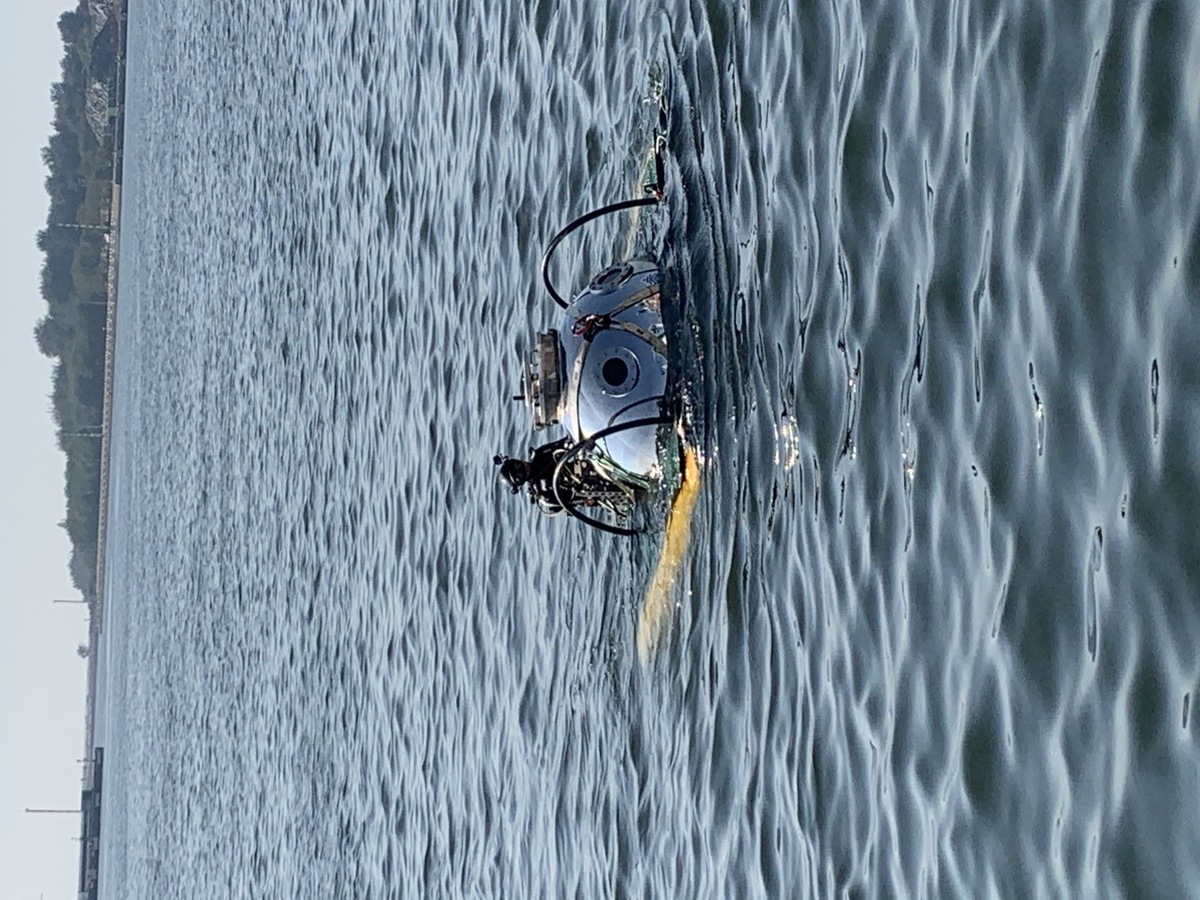
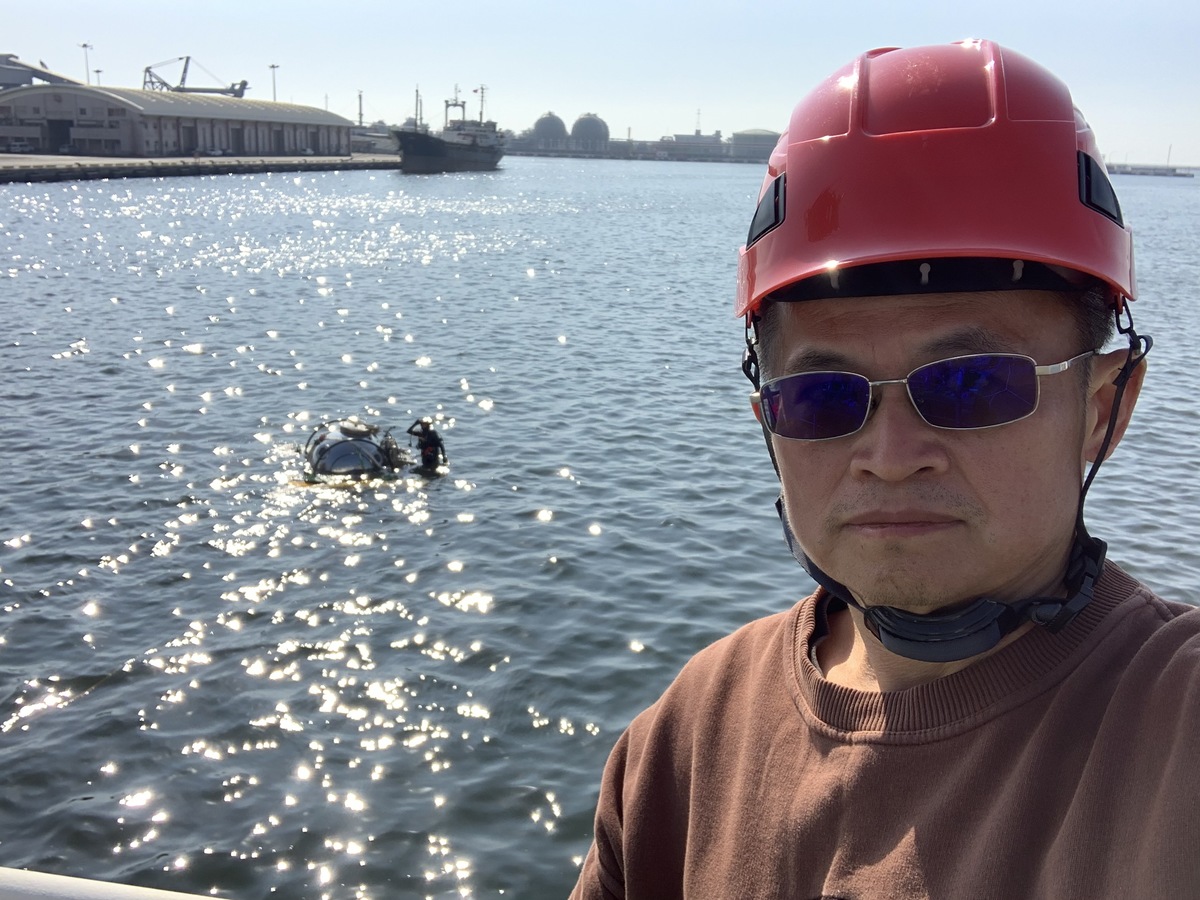
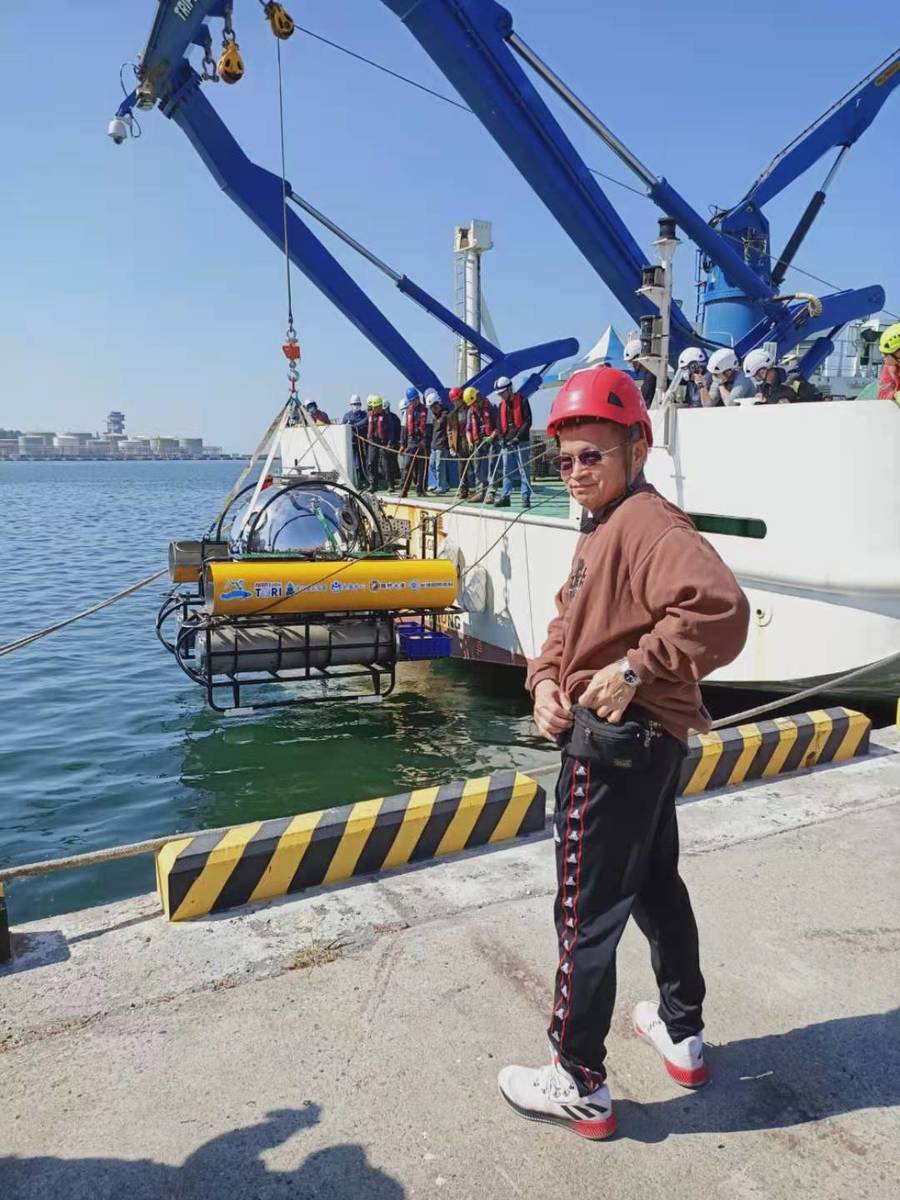
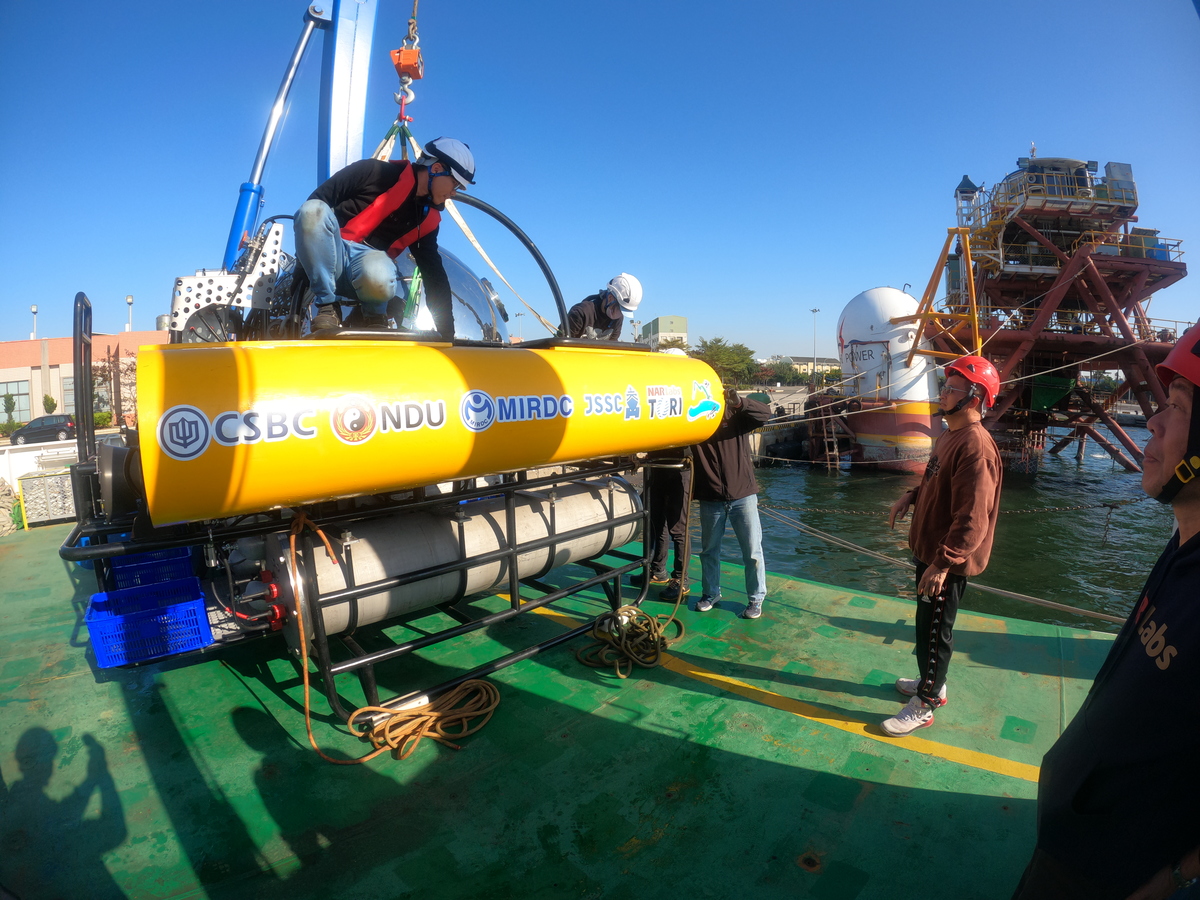
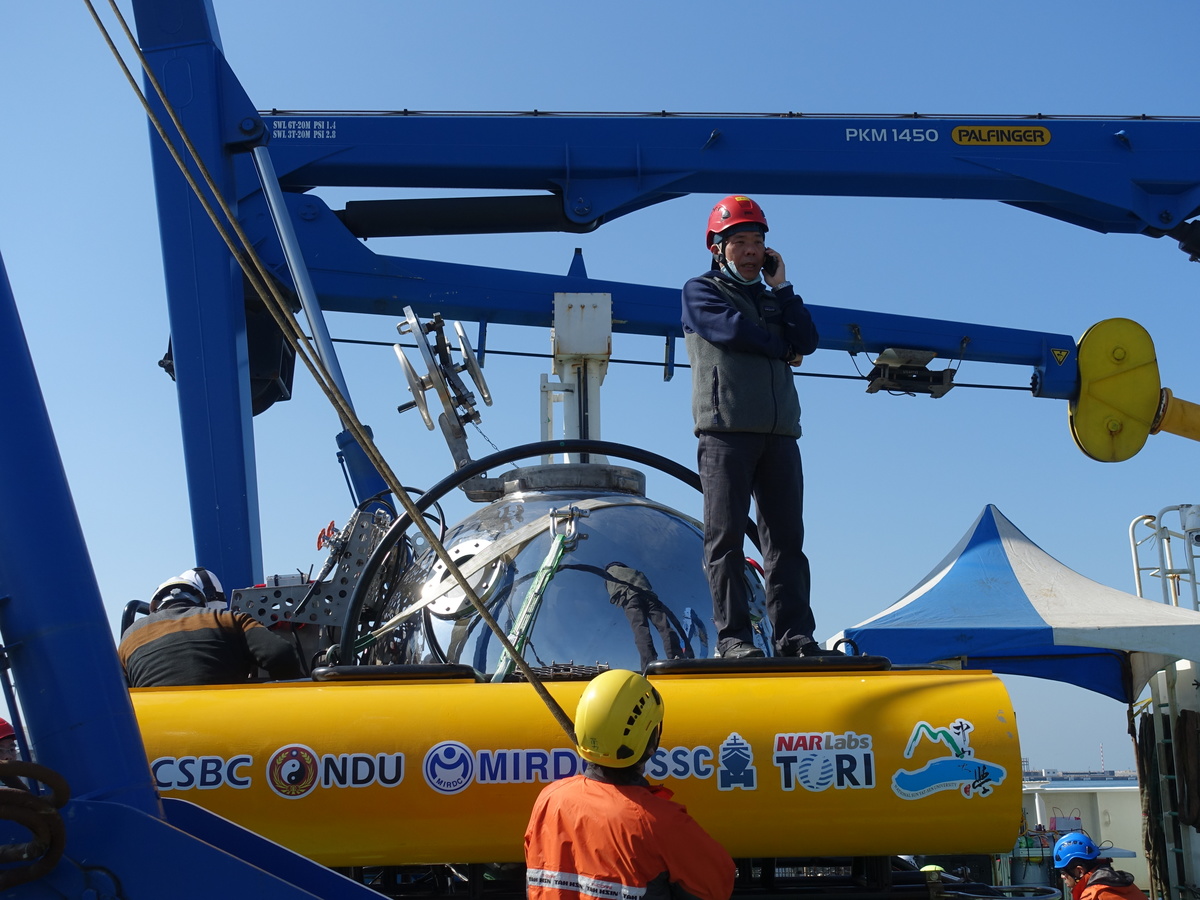
2021-02-17
The Underwater Vehicle R&D Center at NSYSU successfully completed the test of its first-generation two-pilot manned underwater vehicle (MUV) in the open waters around the Anping Port in Tainan at the depth of 8 meters. NSYSU President Ying-Yao Cheng emphasized that this was the first underwater powered navigation trial run of the MUV made in Taiwan, setting a new landmark in Taiwan’s underwater technology. The R&D team plans to conduct a final test of the MUV in June this year at the depth of 10 to 20 meters in around the coast line of the Little Liuchiu Island where currents are unpredictable.
“This test in the waters outside the Anping Port in Tainan was a realistic full-scale examination of the MUV’s capabilities!” Director of the NSYSU Underwater Vehicle R&D Center, Prof. Chua-Chin Wang, pointed out that in July last year, this submarine was tested in the relatively stable waters of the Port of Kaohsiung. It dived to a depth of 8 meters controlled by airbag manipulation and had been undergoing tests on vertical movement and balance adjustment, payload capability, and cabin watertightness for nearly two hours. This time in Tainan, the test was entirely different. “Because in the “real” ocean there are currents and low visibility in the bay as the water is turbid, this test proved the underwater navigation capability of the small submarine powered by the battery system.”
Director Wang further explained that because of the rather low visibility underwater, for safety reasons, the staff put on diving suits and stood around the outer stainless steel frame of the underwater vehicle and operated the dashboard. Before diving and navigating, the MUV had to "warm up" by repeatedly submerging and resurfacing vertically, and cruising horizontally in an “S” route. Then, it dived slantingly from the surface to the seabed 8 meters deep, cruised, and resurfaced. This short, three-minute test was completed successfully and set a record as the first underwater powered navigation of an MUV developed in Taiwan. The team members witnessing this historic moment cheered loudly. “We hope that in the future, this vehicle will be used for underwater exploration, rescue, tourism, maintenance, collecting samples, and even contribute to Taiwan's Indigenous Defense Submarine Project after we incorporate AI functions”.
Director Wang said that this successful test of MUV’s underwater power navigation opens the door to the final, most important crew-in test of the vehicle. The team plans to conduct the final test in June this year in the challenging waters around Little Liuchiu Island at the maximum depth of 20 m and test the personnel life support system in the metal cabin. If this final test is successfully completed, the small submarine developed autonomously by NSYSU will be officially ready for manned navigation in the deep sea.
Wang pointed out that because the whole structure of the first-generation MUV is made of metal and its windows are rather small, the vehicle is suitable for marine science research. He also said that in the future, the NSYSU team will continuously improve the vehicle and develop new MUVs. He hopes that in 2022, the team will launch a half-acrylic, half-metal second-generation MUV to create a 180-degree field of view, and in 2026, a third-generation MUV entirely made of acrylic for a 360-degree field of view.
The NSYSU team hopes to extend the submarine's application by widening its field of view. The MUV can be used for underwater tourism, cage farming, or underwater energy resources investigation. With underwater sonar technology integrated, the MUV can be used for underwater exploration and rescue. The integration with AI functions will make the MUV useful for military defense and Taiwan's Indigenous Defense Submarine Project, and it will be able to assist underwater navigation and the development of smart defensive weapons for Taiwan’s underwater national security.
The Underwater Vehicle R&D Center at NSYSU successfully completed the test of its first-generation two-pilot manned underwater vehicle (MUV) in the open waters around the Anping Port in Tainan at the depth of 8 meters. NSYSU President Ying-Yao Cheng emphasized that this was the first underwater powered navigation trial run of the MUV made in Taiwan, setting a new landmark in Taiwan’s underwater technology. The R&D team plans to conduct a final test of the MUV in June this year at the depth of 10 to 20 meters in around the coast line of the Little Liuchiu Island where currents are unpredictable.
“This test in the waters outside the Anping Port in Tainan was a realistic full-scale examination of the MUV’s capabilities!” Director of the NSYSU Underwater Vehicle R&D Center, Prof. Chua-Chin Wang, pointed out that in July last year, this submarine was tested in the relatively stable waters of the Port of Kaohsiung. It dived to a depth of 8 meters controlled by airbag manipulation and had been undergoing tests on vertical movement and balance adjustment, payload capability, and cabin watertightness for nearly two hours. This time in Tainan, the test was entirely different. “Because in the “real” ocean there are currents and low visibility in the bay as the water is turbid, this test proved the underwater navigation capability of the small submarine powered by the battery system.”
Director Wang further explained that because of the rather low visibility underwater, for safety reasons, the staff put on diving suits and stood around the outer stainless steel frame of the underwater vehicle and operated the dashboard. Before diving and navigating, the MUV had to "warm up" by repeatedly submerging and resurfacing vertically, and cruising horizontally in an “S” route. Then, it dived slantingly from the surface to the seabed 8 meters deep, cruised, and resurfaced. This short, three-minute test was completed successfully and set a record as the first underwater powered navigation of an MUV developed in Taiwan. The team members witnessing this historic moment cheered loudly. “We hope that in the future, this vehicle will be used for underwater exploration, rescue, tourism, maintenance, collecting samples, and even contribute to Taiwan's Indigenous Defense Submarine Project after we incorporate AI functions”.
Director Wang said that this successful test of MUV’s underwater power navigation opens the door to the final, most important crew-in test of the vehicle. The team plans to conduct the final test in June this year in the challenging waters around Little Liuchiu Island at the maximum depth of 20 m and test the personnel life support system in the metal cabin. If this final test is successfully completed, the small submarine developed autonomously by NSYSU will be officially ready for manned navigation in the deep sea.
Wang pointed out that because the whole structure of the first-generation MUV is made of metal and its windows are rather small, the vehicle is suitable for marine science research. He also said that in the future, the NSYSU team will continuously improve the vehicle and develop new MUVs. He hopes that in 2022, the team will launch a half-acrylic, half-metal second-generation MUV to create a 180-degree field of view, and in 2026, a third-generation MUV entirely made of acrylic for a 360-degree field of view.
The NSYSU team hopes to extend the submarine's application by widening its field of view. The MUV can be used for underwater tourism, cage farming, or underwater energy resources investigation. With underwater sonar technology integrated, the MUV can be used for underwater exploration and rescue. The integration with AI functions will make the MUV useful for military defense and Taiwan's Indigenous Defense Submarine Project, and it will be able to assist underwater navigation and the development of smart defensive weapons for Taiwan’s underwater national security.
Click Num:
Share
